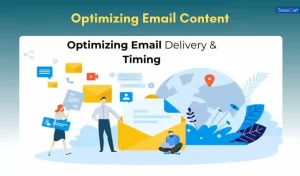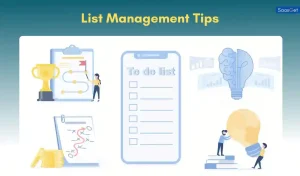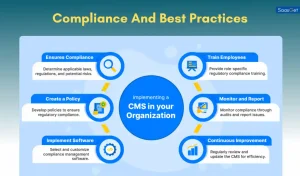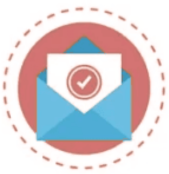Sender email marketing is a powerful tool for businesses to connect with their audience. It involves sending targeted emails to a list of subscribers who have shown interest in your products or services. With the right strategy, businesses can build relationships, increase brand awareness, and drive sales.
Personalization and segmentation are key to successful email marketing campaigns. By delivering relevant content to the right audience, businesses can improve open rates and conversions. Email marketing also offers measurable results, allowing businesses to track performance and optimize their strategies. For businesses of all sizes, sender email marketing remains an essential component of a successful digital marketing strategy.
Introduction To Email Marketing
Email marketing is a powerful tool for businesses. It helps connect with customers directly in their inboxes. This method is cost-effective and has a high return on investment (ROI). Businesses can send personalized messages to their audience. Through email marketing, companies can promote their products and services effectively.
Importance Of Email Marketing
Email marketing plays a crucial role in digital marketing. Here are some reasons why:
- Direct Communication: Email allows direct communication with customers.
- Cost-Effective: Email marketing is cheaper than other marketing methods.
- Personalization: Emails can be personalized for each recipient.
- High ROI: Email marketing offers a high return on investment.
- Measurable Results: You can track and measure email marketing performance.
Key Metrics In Email Marketing
Tracking the right metrics is vital for email marketing success. Here are the key metrics to focus on:
| Metric | Description |
|---|---|
| Open Rate | The percentage of recipients who open your email. |
| Click-Through Rate (CTR) | The percentage of recipients who click on a link in your email. |
| Conversion Rate | The percentage of recipients who complete a desired action. |
| Bounce Rate | The percentage of emails that could not be delivered. |
| Unsubscribe Rate | The percentage of recipients who opt-out of your email list. |
Crafting Compelling Subject Lines
Crafting compelling subject lines is an art in sender email marketing. A subject line can make or break your email campaign. It’s the first thing your audience sees, and it determines whether they open the email or ignore it. This section will guide you on how to create subject lines that capture attention and drive engagement.
Importance Of Subject Lines
Subject lines are crucial in email marketing for several reasons:
- First Impression: The subject line is the first impression of your email.
- Open Rates: A compelling subject line boosts open rates.
- Click-Through Rates: Engaging subject lines lead to higher click-through rates.
- Brand Perception: Well-crafted subject lines enhance brand perception.
Tips For Effective Subject Lines
| Tip | Description |
|---|---|
| Keep It Short | Subject lines should be concise, ideally under 50 characters. |
| Use Action Words | Include verbs to inspire action, such as “Discover,” “Learn,” or “Get.” |
| Create Urgency | Use time-sensitive words like “Now,” “Today,” or “Limited Time.” |
| Personalize | Include the recipient’s name or relevant details to make it personal. |
| A/B Test | Test different subject lines to see which performs best. |
These tips will help you craft subject lines that catch the reader’s eye. Remember to always focus on the value you offer.
Personalization Techniques
Email marketing is effective. Personalization techniques make it more powerful. Personalization improves engagement, boosts open rates, and drives conversions. Let’s explore two key techniques: using names and preferences and segmenting your audience.
Using Names And Preferences
Addressing recipients by their names makes emails feel personal. It shows you value them. Use merge tags to insert names automatically. For example, use {{FirstName}} in your email template.
Consider preferences too. If a customer likes tech gadgets, send them related offers. Personalize content based on past purchases and browsing history. This makes emails relevant and interesting.
Here are some personalization tips:
- Use recipient’s first name in the subject line.
- Include personalized product recommendations.
- Send birthday or anniversary emails with special offers.
| Personalization Technique | Example |
|---|---|
| Using Names | Hello {{FirstName}}, check out our new arrivals! |
| Using Preferences | We noticed you love tech gadgets. Here are some new releases. |
Segmenting Your Audience
Segmenting your audience means dividing them into smaller groups. This makes your emails more relevant. Use criteria like age, location, purchase history, and interests.
For instance, send different emails to new subscribers and loyal customers. This ensures each group gets content that matters to them.
Follow these segmentation strategies:
- Create segments based on demographic data.
- Segment by purchase behavior and frequency.
- Use engagement levels to create active and inactive segments.
Here’s a simple segmentation table:
| Segment | Criteria | Email Content |
|---|---|---|
| New Subscribers | Subscribed within the last month | Welcome email and introductory offers |
| Loyal Customers | Made multiple purchases | Exclusive deals and loyalty rewards |
| Inactive Users | No engagement in 3 months | Re-engagement campaigns |
Optimizing Email Content

Optimizing email content is a crucial part of sender email marketing. It ensures your messages engage and convert your audience. This section will cover how to create engaging content and use visuals and media effectively.
Creating Engaging Content
Creating engaging content is vital for effective email marketing. Here are some tips:
- Use short sentences to keep the reader’s attention.
- Include a clear call-to-action (CTA) in every email.
- Write a catchy subject line to increase open rates.
Here is a simple table to help you understand:
| Element | Purpose |
|---|---|
| Subject Line | Grab attention |
| Call-to-Action | Drive action |
Using Visuals And Media
Using visuals and media can make your emails more engaging. Here are some ways to do it:
- Include high-quality images related to your content.
- Use infographics to present data clearly.
- Add videos for more interactive content.
Remember, visuals should support your message, not distract from it. Keep your designs simple and clean. This helps the reader focus on the main content.
Mobile-friendly Emails
In today’s digital age, most people use their phones to check email. Mobile-friendly emails help businesses reach their audience effectively. They ensure that emails display correctly on all devices, especially smartphones.
Importance Of Mobile Optimization
More than half of email opens occur on mobile devices. If emails are not mobile-friendly, they might appear broken or unreadable. This can lead to a decrease in engagement and conversions. Optimizing emails for mobile can improve user experience and increase email campaign success.
Best Practices For Mobile
- Use responsive design: Ensure your email layout adjusts to different screen sizes.
- Keep it simple: Use a clean and simple layout for easy readability.
- Use large fonts: Ensure text is legible on small screens by using larger fonts.
- Optimize images: Use images that load quickly and display well on mobile.
- Use clear calls-to-action: Make buttons large and easy to tap.
- Test your emails: Always test your emails on multiple devices before sending.
| Best Practice | Description |
|---|---|
| Responsive Design | Adjusts layout to different screen sizes. |
| Simple Layout | Easy to read and navigate. |
| Large Fonts | Ensures text is readable on small screens. |
| Optimized Images | Images load quickly and display well. |
| Clear CTAs | Buttons are large and easy to tap. |
| Test Emails | Test on multiple devices before sending. |
By following these best practices, your emails will be more effective on mobile devices. This can lead to higher engagement and better results for your email marketing campaigns.
Timing And Frequency
Understanding the timing and frequency of your email marketing campaigns is crucial. It can significantly impact your open rates and engagement. Let’s dive into the best practices for choosing the right time and frequency for your emails.
Choosing The Best Time To Send
Picking the best time to send emails can be tricky. Here are some tips to help you:
- Weekdays are generally better than weekends.
- Tuesdays and Thursdays often see higher open rates.
- Aim for 10 AM or 2 PM for optimal engagement.
These times are based on studies showing higher open rates. People are usually checking emails at these times. Adjust based on your audience’s behavior.
Optimal Email Frequency
Sending too many emails can lead to unsubscribes. Too few, and you may be forgotten. Here’s a guide to finding the right balance:
| Type of Email | Recommended Frequency |
|---|---|
| Newsletters | Once a week |
| Promotional Emails | Twice a month |
| Product Updates | Monthly |
Adjust the frequency based on your audience’s response. Track your open rates and click-through rates. Use this data to find the sweet spot.
A/b Testing Strategies
Sender email marketing campaigns thrive on continuous improvement. A/B testing strategies help you refine these campaigns to maximize engagement and conversions. By experimenting with different elements, you can pinpoint what resonates best with your audience.
What To Test
In A/B testing, you can test multiple elements in your email campaigns:
- Subject lines: Try different wording, lengths, or styles.
- Call-to-Action (CTA): Experiment with button text, size, or placement.
- Content layout: Rearrange text, images, or sections.
- Personalization: Use the recipient’s name or tailored content.
- Send time: Test different days or times of the day.
Analyzing Test Results
Once you’ve conducted your tests, analyze the results carefully:
| Metric | What to Look For |
|---|---|
| Open rate | Check which subject line led to more opens. |
| Click-through rate | Identify which CTA had higher engagement. |
| Conversion rate | See which content led to more conversions. |
Use these insights to refine your future campaigns. Focus on what worked best and iterate. A/B testing is a continuous process. Always seek to improve and adapt to your audience’s preferences.
List Management Tips

Effective list management is crucial for successful email marketing. It ensures your messages reach the right people. Here are some list management tips to help you grow and maintain your email list effectively.
Growing Your Email List
Growing your email list is essential for expanding your reach. Here are some tips:
- Create engaging sign-up forms: Use clear calls-to-action.
- Offer incentives: Give discounts or free downloads.
- Use social media: Promote your sign-up form on platforms like Facebook and Twitter.
- Host webinars: Collect emails during registration.
- Leverage existing contacts: Encourage current subscribers to refer friends.
Maintaining List Hygiene
Keeping your email list clean improves deliverability. Here are some steps:
- Remove inactive subscribers: Clean your list regularly.
- Use double opt-in: Verify new subscribers’ email addresses.
- Monitor bounce rates: Remove addresses that bounce repeatedly.
- Segment your list: Group subscribers based on interest and behavior.
- Update contact information: Regularly ask subscribers to update their details.
Implementing these tips ensures your email list remains healthy and engaged. This leads to better campaign performance and higher engagement rates.
Analyzing Performance
Analyzing performance is crucial in Sender Email Marketing. It helps you understand what works and what doesn’t. By examining the data, you can make informed decisions to improve your campaigns. This section will cover the key metrics you should focus on and how to use the data effectively.
Key Performance Indicators
Key Performance Indicators (KPIs) are essential for tracking your email marketing success. Here are some important KPIs to consider:
- Open Rate: The percentage of recipients who open your email.
- Click-Through Rate (CTR): The number of clicks on links within your email.
- Bounce Rate: The percentage of emails that were not delivered.
- Unsubscribe Rate: The number of people who opt-out from your email list.
- Conversion Rate: The percentage of recipients who completed a desired action.
Improving Based On Data
Data is a powerful tool for improving your email marketing. Here’s how you can use it:
- Analyze Open Rates: Identify which subject lines get the most opens. Use similar styles in future emails.
- Examine Click-Through Rates: Look at which links get the most clicks. Place similar links in prominent positions.
- Reduce Bounce Rates: Clean your email list regularly. Remove invalid or inactive emails.
- Lower Unsubscribe Rates: Provide value in your emails. Ensure your content is relevant to your audience.
- Boost Conversion Rates: Test different calls-to-action (CTAs). Use clear and compelling language.
Using these steps, you can make your email marketing more effective. Remember, the key is to constantly test and refine your approach.
Compliance And Best Practices

Compliance and best practices are crucial in sender email marketing. Following these ensures your campaigns are legal and effective. This section covers the key aspects of compliance and best practices.
Understanding Regulations
Following email marketing regulations is vital. These laws protect consumers and maintain trust. Here are some key regulations:
- CAN-SPAM Act: This U.S. law sets rules for commercial emails. It requires transparency and provides recipients the right to stop emails.
- GDPR: This regulation applies to the European Union. It mandates strict consent and data protection.
- CASL: Canada’s law against spam. It requires clear consent and truthful information.
Understanding and adhering to these laws is non-negotiable.
Ethical Email Marketing
Ethical email marketing goes beyond compliance. It builds trust and long-term relationships. Follow these best practices:
- Get Clear Consent: Always have explicit permission before sending emails.
- Provide Value: Ensure your emails offer genuine value to your subscribers.
- Respect Privacy: Handle subscriber data with care and confidentiality.
- Be Transparent: Clearly state your identity and intentions.
- Make Unsubscribing Easy: Include a visible and simple way to unsubscribe.
Here is a summary of the key points in a table format:
| Regulation | Key Requirement |
|---|---|
| CAN-SPAM Act | Transparency and opt-out options |
| GDPR | Strict consent and data protection |
| CASL | Clear consent and truthful information |
Frequently Asked Questions
What Is Sender Email Marketing?
Sender email marketing is a strategy that uses email to send promotional messages to a targeted audience.
How Does Sender Email Marketing Work?
Marketers create and send emails to subscribers, aiming to build relationships and drive sales.
Why Is Sender Email Marketing Effective?
It reaches a targeted audience, provides personalized content, and offers measurable results.
How Can I Start Sender Email Marketing?
Choose an email marketing platform, build a subscriber list, create engaging content, and send emails regularly.
What Tools Are Best For Sender Email Marketing?
Popular tools include Mailchimp, Sendinblue, and Constant Contact.
How To Improve Sender Email Marketing Campaigns?
Use segmentation, personalization, A/B testing, and track performance metrics to optimize results.
What Are Common Mistakes In Sender Email Marketing?
Avoiding spammy content, neglecting mobile optimization, and failing to analyze campaign performance.
Conclusion
Mastering Sender Email Marketing can transform your business’s communication strategy. Utilize these tips to boost engagement and drive conversions. Consistent efforts in email marketing lead to significant growth. Stay updated with trends and refine your approach for the best results.
Effective email marketing is key to building lasting customer relationships.


